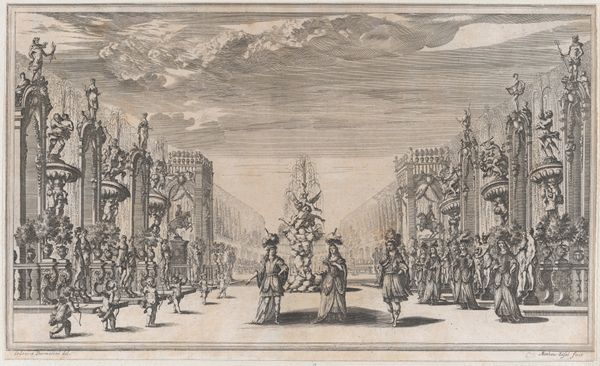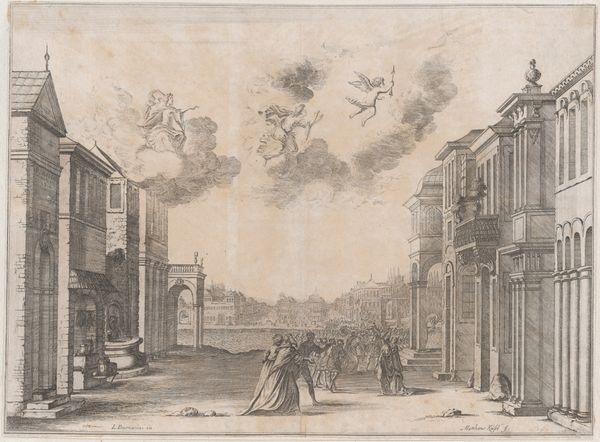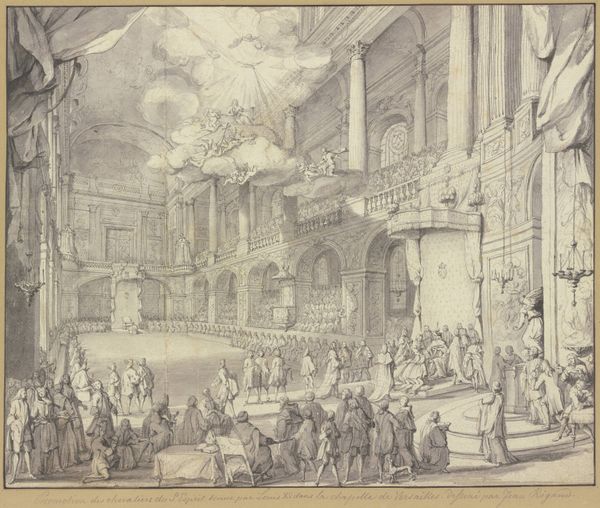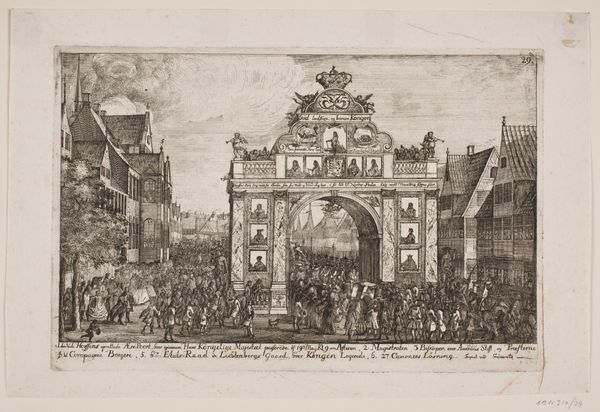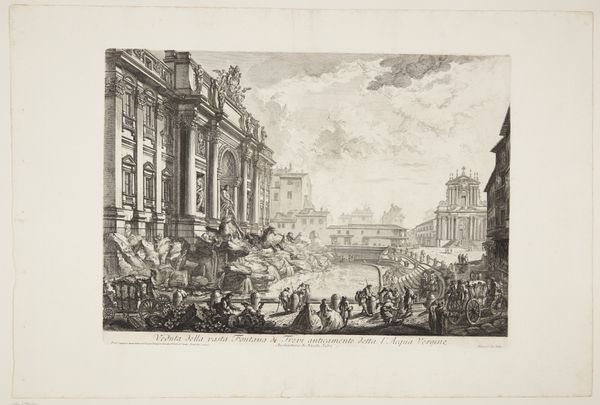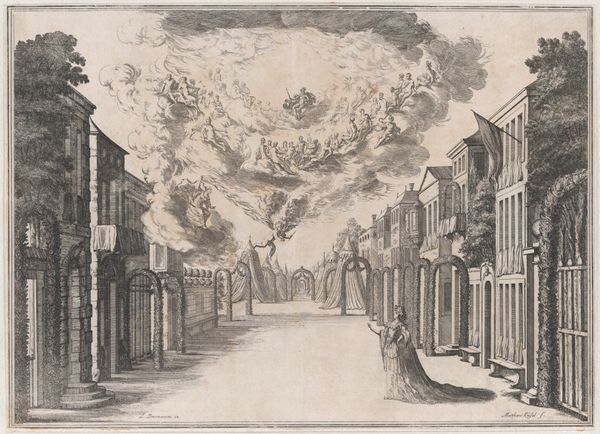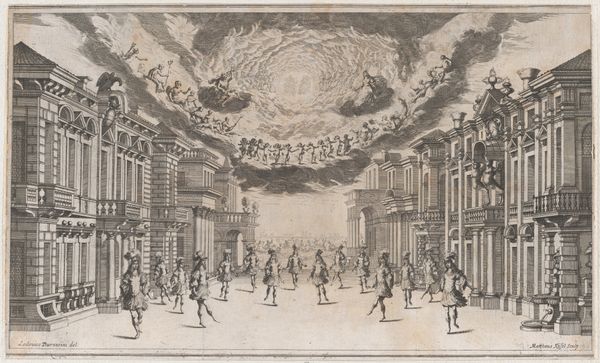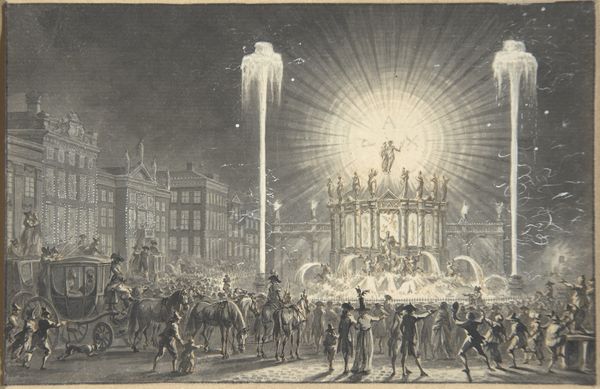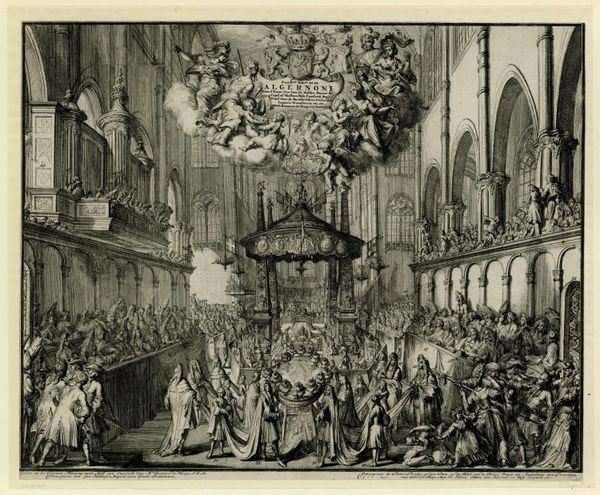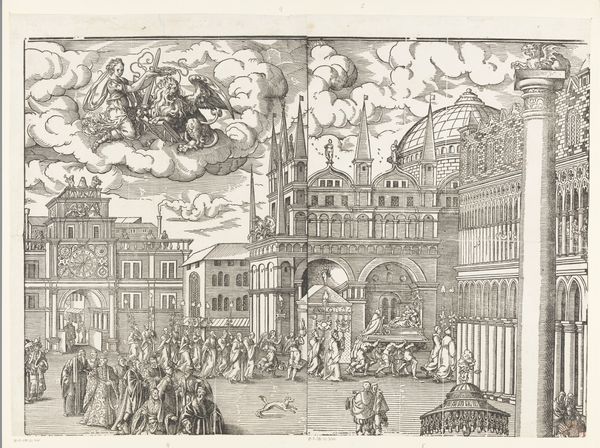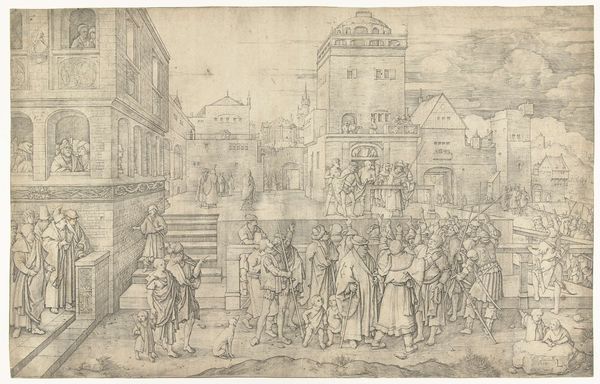
A large gathering of people in the street as a goddess races across the sky in a chariot led by four horses; set design from 'Il Fuoco Eterno' 1674
0:00
0:00
drawing, print, etching, engraving
#
drawing
#
baroque
# print
#
etching
#
landscape
#
figuration
#
horse
#
cityscape
#
history-painting
#
engraving
Dimensions: Sheet (Trimmed): 11 15/16 × 16 1/2 in. (30.3 × 41.9 cm)
Copyright: Public Domain
Curator: This engraving, dating back to 1674, is entitled "A large gathering of people in the street as a goddess races across the sky in a chariot led by four horses; set design from 'Il Fuoco Eterno'," and it comes to us from the hand of Mathäus Küsel. Editor: The overwhelming first impression is one of awe, isn’t it? That dramatic foreshortening really draws you into the scene. But the crisp lines—almost like mechanical drawings. Curator: Exactly. Note the interplay of engraving and etching techniques. Küsel masterfully uses line weight and density to create depth and suggest textures. We must also remember that printmaking served as a form of mass production; designs like these became increasingly circulated, influencing tastes far beyond the immediate spectators of a theatrical production. The materiality itself is fundamental. Editor: Yes, but what is fascinating is the cultural narrative presented. That goddess in her chariot—the figure embodies power and authority, but also fertility and light. The gathered people seem to be frozen in a state of reverence. And I cannot but wonder about the building crowned with sculptures at the vanishing point of the composition. Is this a temple? Curator: Most likely a theater modeled after the architecture of a Roman temple. Stagecrafts from that time blurred those boundaries, yes. The Baroque style celebrates elaborate spectacle. Each line, each swirl serves a symbolic function, speaking of authority but ultimately requiring labour to realize it as both an image and a performance on stage. Editor: True. I keep coming back to the theatrical nature. The set design is almost more captivating than the figures. Each detail reinforces the idea of the triumph of spectacle. It's a kind of manipulation of perception. Curator: Yes. The consumption of theatrical experience, especially within the elites, was central to self-representation, political messaging, and economic development of stagecraft and technical design, evident here. Küsel captures the entire industrial complex behind creating these images. Editor: Examining it in this light, one notices that the image works on multiple layers – its artistry, symbolic weight, and, of course, it as an artefact of early modern theatrical production. Thank you for unveiling such complex history for our visitors! Curator: An insightful experience. Looking at Küsel's craft allows us to appreciate not only its artistic vision but also the machinery involved in making visual culture accessible back in the 17th Century!
Comments
No comments
Be the first to comment and join the conversation on the ultimate creative platform.
